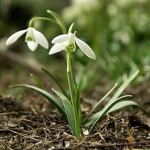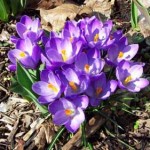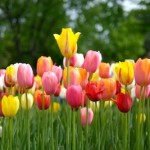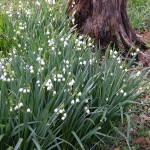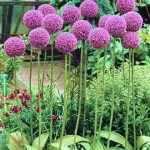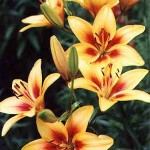Written by David Gorden
A well crafted landscape is much like a rich musical arrangement, with multiple layers complimenting each other to create an interesting and satisfying whole. In the landscape, the “layers” of trees, shrubs, perennials, groundcovers, and hardscape items collectively provide a setting that has ideally been designed to be of interest and beauty throughout the year. An additional “layer” that further enhances a landscape is bulbs and here is our way to help you have success with bulbs.
In the early spring when leaves are just appearing on woody plants and many perennials are deciding whether to emerge from their winter slumber, tulips, daffodils, crocus, hyacinth, snow drops and others have burst into bloom, bringing what has been an uninspiring winter landscape to colorful life. In many gardens it’s the most boldly colorful time of the year.
Particularly useful planted within a perennial bed, especially among typical late risers like ornamental grasses and hosta, bulbs provide an added dimension to the garden. Then as the perennials emerge, their new growth begins to conceal the bulb foliage as it begins its slow browning process.
Snowdrops (Galanthus nivalis) with its delicate white bell-like flowers is one of the earliest to appear, often popping up through the snow, seemingly impervious to cold weather.
Crocus in its varied colors is perhaps the first sign of spring. Though low in stature it is especially showy when allowed to naturalize in an area.
I like to mix tulip colors in subtle – red with pink, and not so subtle – purple and gold, combinations. Tulips provide vivid colors that are rarely attainable from other plants. I particularly like using them in more formal garden settings. For full impact they must be planted densely. A too sparsely planted bed of tulips looks sad. Though they have a reputation for having short life spans, they are worth the effort of replanting every couple years if necessary.
Daffodils or Narcissus, on the other hand will thrive for decades, naturalizing and expanding as they do. Though not offering the variety of colors provided by tulips, a mass planting in full blooming glory is unrivaled for beauty in the garden. I like informally scattering large yellow daffodils along the edge of wooded areas. Some of the smaller types can be nicely used in smaller garden spaces.
I enjoy the delicate dangling white flowers of Leucojum and admire the plant’s toughness and ability to fill in an area. However, sometimes so abundantly that they choke out late emerging perennials. Its glossy foliage hangs around quite awhile after the blossoms fade, so it is best used as an underplanting for taller woody plants or in areas left bare or planted in annuals once it can be cleared away.
Bulbs can be selected to provide floral enjoyment not only in early spring but later into the summer as well. Favorites for later blooming are allium and lilies.
Allium with their purplish ball-like flowerheads burst onto display in late spring/early summer. Their sturdy green stalks will emerge through other lower growing plants and support the flowerheads above. Though allium can be useful in combination with many plants, I am particularly fond of them being interspersed with hosta. It appears as if the hosta itself is putting forth the flower. Allium can be planted more sparsely than tulips or daffodils. They are an effective complimentary accent plant and don’t have to be the primary focus of an area.
Lilies (Asiatic and Oriental), with their varied and exotic colored flowers, bloom even later, in July or August. Like allium, they are able to emerge through the foliage of other plants and tower (as much as 3 feet or more) above. Unlike allium, the bright colors of lilies aren’t always as complimentary to that of others. They therefore have to be matched carefully with their neighbors.
These are just a few of the many plants deserving to be a part of a garden’s “bulb” layer. Almost all are meant to be planted in autumn (actually anytime until the frozen ground prohibits digging). Then, the patient wait begins until the plants emerge in spring to display the “fruit of your labor”. When the bulbs are on display, note where you’d like to add more in the fall. Don’t try to remember in fall where there were deficiencies those several months earlier.
The symphony that is a garden is not complete without a rich layer of bulbs providing harmony.



